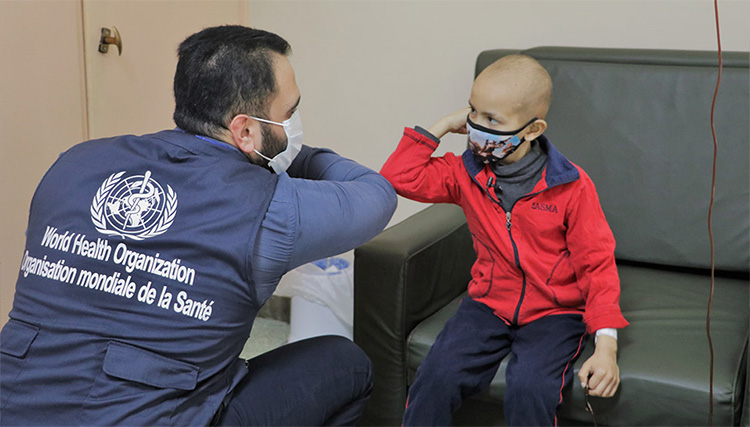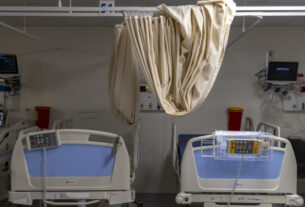15 February 2024 – On International Childhood Cancer Day 2024, we highlight the vital role of parents, as well as family doctors and paediatricians, in the early detection of childhood cancers. No one is more ready to invest in their children’s well-being than parents. By getting to know the early signs and symptoms of certain cancers and looking out for them, you could save your child’s life.
Globally, more than 1000 children are diagnosed with cancer every day. Recent medical advances make for very high chances of survival in high-income countries, where more than 80% of children diagnosed with cancer will survive. Yet only about 20% of children diagnosed with cancer will survive in some low- and middle-income countries.
CureAll framework: WHO Global Initiative for Childhood Cancer
The latest estimates show that in the WHO Eastern Mediterranean Region, more than 70% of all children with a cancer diagnosis died in 2022 (1). Unlike cancer in adulthood, the underlying factors that contribute to childhood cancer are poorly understood, and only a small fraction of childhood cancers can be prevented. This means that the recovery of these children largely depends on the capacity of health systems to ensure timely diagnosis, early referral and appropriate treatment. Achieving this is especially challenging in the many countries of the Region that contend with humanitarian emergencies, natural disasters and political instability.
In 2018, WHO launched the Global Initiative for Childhood Cancer (GICC). Its main goal is to reduce the survival gap by 2030, by making sure that at least 60% of children with cancer worldwide will survive their diagnosis. GICC is a cooperative effort involving WHO on a global, regional and country-specific scale, in partnership with St. Jude Children’s Research Hospital.
This ambitious goal can be reached mainly by strengthening health systems, so that primary health providers – or even parents – are able to spot the early signs of childhood cancer, and a referral system can direct the child to the specialized care vital for their survival. As well as treatment, children also require focused attention for their ongoing physical and cognitive development and nutritional well-being. This calls for care by a committed, multidisciplinary team.
Parents, general practitioners and paediatricians play a vital role in detecting childhood cancer early on. It is crucial to know the early signs and symptoms of certain cancers and stay on the lookout for them in your children.
In the Eastern Mediterranean Region, leukaemia was the most common cancer among children and adolescents aged 0–19 years in 2022 (1). An unexplained high fever is the most common sign of leukaemia. It is also a common sign of lymphoma.
Retinoblastoma, a tumour of the eye, is another common cancer in children. It is critical to find this tumour in its early stages to prevent blindness. Eye enlargement is the most common sign. Brain tumours are also fairly common in children. Signs and symptoms to look out for include headaches, developmental delays, and an increase in head circumference in infants.
Let us all contribute to a future where every child has the chance to live a full, healthy life, no matter where they are born. International Childhood Cancer Day is not just about raising awareness and expressing support for children and adolescents with cancer, the survivors and their families. This day is also a call to each of us to play a part in the fight against childhood cancer.
1. Absolute numbers, Incidence, Both sexes, age [0–19], in 2022. WHO Eastern Mediterranean region (EMRO).
Cancer Today. International Agency for Research on Cancer.



